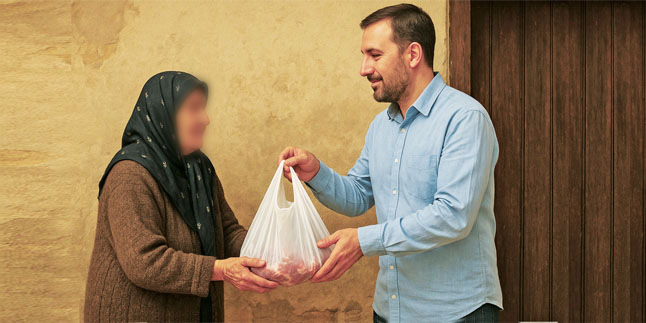Alcohol Related Liver Disease Michigan Medicine

Content
There’s no single formula that leads to alcohol-induced hepatitis in everybody. But statistically, you’re more at risk if you drink heavily on a regular basis for an extended period of time. Heavy drinking means different things for men (and people AMAB) and women (and people AFAB). For people assigned male, it’s about four standard drinks a day or more than 14 drinks per week. For people assigned female, it’s about three drinks per day or more than 7 drinks per week. These effects can have serious medical consequences, such as an increased risk for strokes.
The following information can help people know when to see a doctor and help them know what to expect during the evaluation. Vasculitis is an inflammation of blood vessels, which can weaken them and make them more prone to rupture. This can lead to the development of bruises on the stomach or other parts of the body.
Grieving for close relative puts you at risk of ‘dying from a broken heart’
Remember that these guidelines are not definitive, and it’s always best to consult with a healthcare professional for a proper evaluation and diagnosis. Bruising is normal and grows more common and more visible as people age. But some bruising can be a warning sign of a serious health issue, doctors caution. The most severe form of alcohol withdrawal is delirium tremens (DTs), characterized by altered mental status and severe autonomic hyperactivity that may lead to cardiovascular collapse.
Consider talking with someone who has had a problem with drinking but has stopped. Alcohol use disorder can include periods of being drunk (alcohol intoxication) and symptoms of withdrawal. Another problem is that Botox injections may cause side effects such as dizziness or drowsiness.
How to Prevent Bruising from Alcohol
Profound hypophosphatemia may cause the phosphate and ATP levels in the RBC’s to decline substantially. This depletion of the store of ATP in the RBC’s leads to increased rigidity of the RBC membranes, eventually damaging the cells. These damaged cells are prematurely destroyed in the spleen, and the patient may develop acute hemolytic anemia. CDT is one of the newest—and perhaps the most promising—of the hematological state markers. Transferrin is an iron-containing protein in the plasma that transports iron, which is stored at various sites in the body, to the developing RBC’s in the bone marrow for incorporation into hemoglobin.
- Although hypophosphatemia-induced hemolysis is rare, its most common cause is alcoholism, especially during the withdrawal phase.
- Alcohol may also pose risks during the healing process after surgery.
When small blood vessels or capillaries are damaged, the leaking blood pools under the skin to form a bruise. Alcohol-induced hepatitis isn’t viral, as other types of hepatitis are. You can’t pass the disease on to others in the same way that you might pass on a virus. However, chronic heavy drinking can be “viral” in the social sense. When friends or family binge drink together, they reinforce in each other the behavior that can lead to alcohol-induced hepatitis. Chronic, heavy alcohol use, or alcohol use disorder, can overload your liver with fat and toxins to process.
Alcohol
While excessive alcohol consumption is a risk factor for cancers that affect your mouth and digestive system, heavy drinking can also increase your risk for skin cancer. When it comes to drinking alcohol, several factors can increase the risk of bruising. Drinking can hinder the body’s capacity to clot blood, making bruising more likely. Second, alcohol dehydrates the body, making skin more delicate and prone to bruising. Finally, excessive alcohol consumption can result in falls or other accidents that result in bruises. People with warning signs should see a doctor right away, as should those who are still bleeding and those who have lost more than a small amount of blood.
Taking dietary supplements like fish oil, garlic, ginkgo, and vitamin E also blocks platelets in the blood from clotting and can lead to easy bruising. Cardiovascular disease
Binge drinking can lead to blood clots, which can lead to heart attacks, stroke, cardiomyopathy (a potentially deadly condition where the heart muscle weakens and fails) and heart rhythm abnormalities. People who quit drinking alcohol after diagnosis show great improvement after six to 12 months.
We may prioritize our health and well-being by being careful of our alcohol use and avoiding binge drinking. Alcohol consumption without a good meal prior may result in headaches, dizziness, and nausea. To maintain a balanced lifestyle, it is advised to have a nutritious meal or snack before drinking alcohol to avoid any negative consequences. Consuming food while drinking alcohol may reduce the pace at which alcohol is absorbed into your circulation. Furthermore, providing your body with essential nutrients can help to support optimal health. Even if you aren’t experiencing severe health problems like cirrhosis from alcohol, seeking early treatment can prevent an alcohol use disorder from progressing and causing severe complications.
Although both procedures are now performed using very fine needles, there is a small possibility that these needles can go through a small blood vessel and cause a small leak. This form of bleeding is usually minimal and most of the cases doesn’t show up as a bruise. Yet, it was noted that ingestion of certain foods before or after your injection day can exacerbate this bruise and https://ecosoberhouse.com/oxford-house/ make it more noticeable. These include; Vitamin E, Ginco, Garlic, Primrose Oil, or St. John’s Wort. Factors that increase the risk include older age, having a condition that affects blood clotting, and using medications such as blood thinners. Alcohol can cause inflammation, disrupt the balance of hormones, and affect the immune system, all of which can lead to skin problems.
Alcohol consumption may also increase the risk for overall excessive fluid retention. Excessive vasodilatation and fluid retention will increase the amount and duration of swelling after surgery. You could also have some sort of blood disorders such as a clotting disorder, blood cancer does alcohol cause bruising (leukemia), hemophilia, Cushing’s syndrome, or Von Willebrand’s disease. This why it’s important to note any additional symptoms such as unexplained weight loss, chills, or fevers. The precise mechanism underlying vacuole development in blood cell precursors currently is unknown.
It can also help to address any unresolved emotional or psychological issues that may have contributed to their addiction. Discover the meaning of bespoke treatment, impeccable experience, and outstanding results. At Starkey Medical Esthetics in Salem, Virginia, we understand the desire to reduce the appearance of fine lines, wrinkles, and sagging skin so you can look your best.
(C) Spur cells are characterized by spikelike protrusions that result from the assimilation of excess cholesterol into the cell’s membrane. At MedicineNet, we believe it is important to take charge of your health through measures such as a living healthy lifestyle, practicing preventative medicine, following a nutrition plan, and getting regular exercise. Understanding your symptoms and signs and educating yourself about health conditions are also a part of living your healthiest life. The links above will provide you with more detailed information on these medical conditions to help you inform yourself about the causes and available treatments for these conditions. For the average healthy guy (say, drinking one or two drinks per night, or fewer than 14 drinks per week) the alcohol-related effects on bruising are temporary, and no real cause for concern. While bumping into something while drinking may seem relatively harmless, the truth is that excessive drinking can set you up for serious injuries from falling or other accidents.
Model pathological mechanisms of alcohol thrombocytopenia and the effects of alcohol on the structure and function of platelets were described. Furthermore, the phenomenon of rapid normalization of the number of platelets in people who stopped drinking was described. Relationships between alcohol use, its intensity and occurrence, and intensity of thrombocytopenia have been demonstrated. Rarely, an increase in bleeding and bruising may be a sign of leukemia.
A doctor can carry out tests to see whether a person has a vitamin deficiency. In other cases, an underlying health condition, such as inflammatory bowel disease, may need addressing. People taking medication who notice an increase in bleeding or bruising should ask a doctor whether their medication can cause bleeding. They may wish to discuss the risks and benefits of continuing treatment.
Why do females get random bruises on legs?
“Leg bruises can be caused by ageing or certain drugs. It may also happen if you have certain medical issues, such as vitamin deficits or bleeding disorders. It might be concerning to notice inexplicable bruises on your or your child's legs, especially if you cannot recollect any incident that could have caused them.













